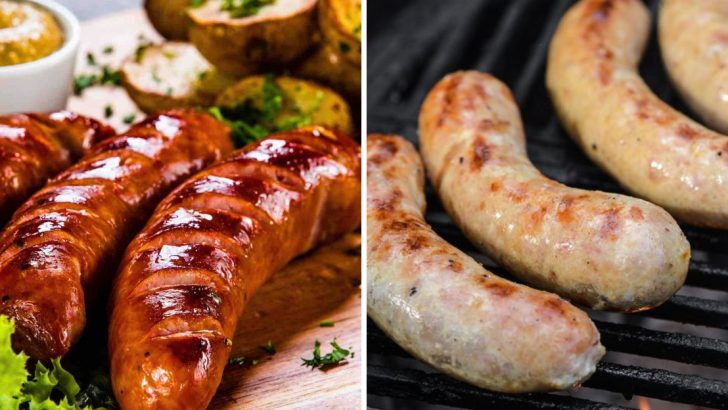Bratwurst and kielbasa might look like distant cousins on a grill, but dig a little deeper and you’ll find they come from different corners of the world—and flavor maps.
Each has its own history, ingredients, and quirks that make it shine in unique ways. Whether you’re team brat or kielbasa-curious, knowing the differences makes your next cookout a whole lot tastier.
Let’s find out what makes these two sausages stand apart, one sizzle at a time.
1. Country Of Origin
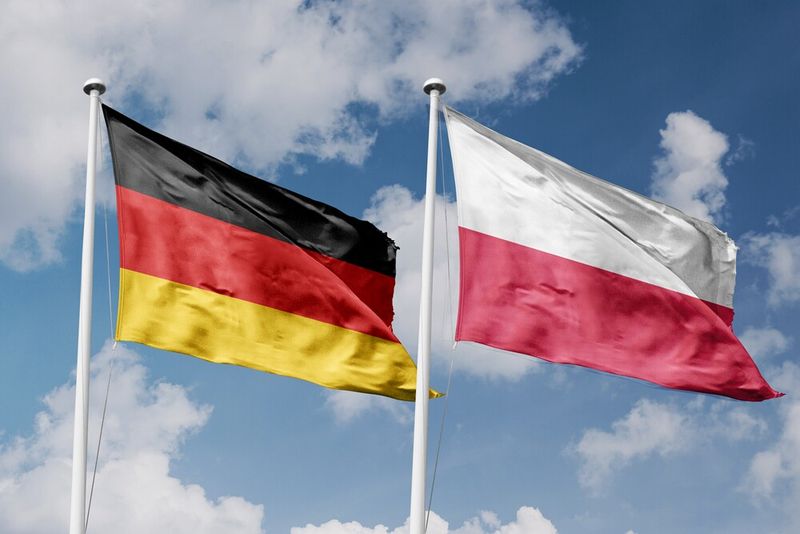
Bratwurst was born in Germany, where nearly every region has its own beloved version, often linked to centuries-old recipes.
Kielbasa comes from Poland and covers a wide range of sausages, though “Polska kielbasa” is the smoked kind most people recognize. Their roots are deep, and both are steeped in serious sausage pride.
2. Common Ingredients
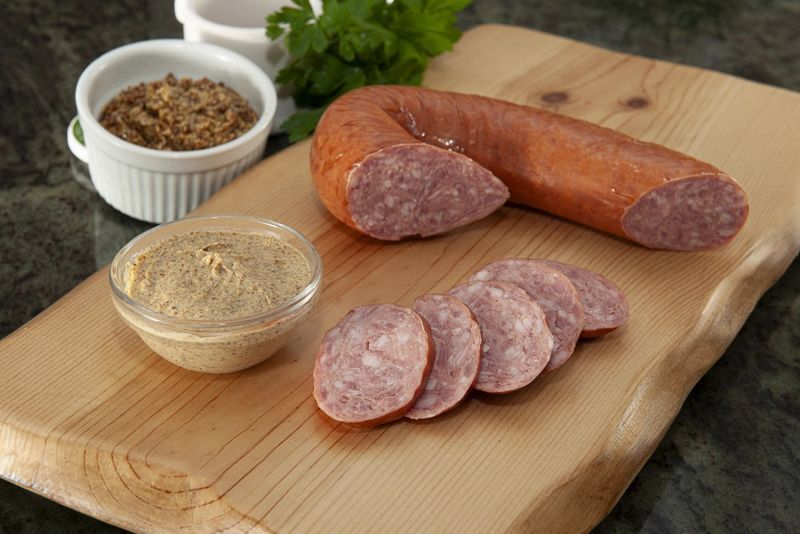
Traditional bratwurst usually blends pork and veal, sometimes with a splash of cream or egg for tenderness.
Kielbasa leans more toward pork and beef, with garlic as a steady flavor companion. The ingredient lists overlap, but it’s the subtle additions that steer their personalities.
3. Texture And Appearance
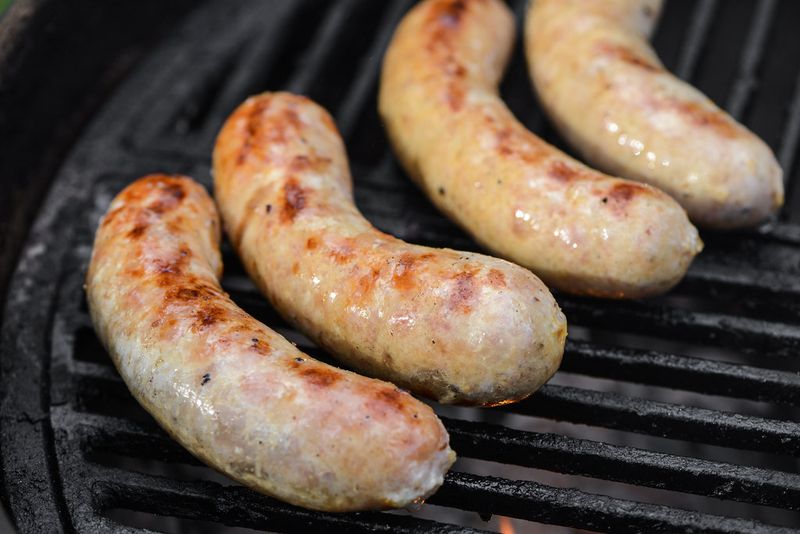
Bratwurst tends to be pale, plump, and smooth before it’s cooked, thanks to its finely ground meat and fresh preparation.
Kielbasa shows off a deeper, reddish hue and a firmer bite, shaped by smoking and coarser cuts. You’ll spot the difference before the first taste.
4. Flavor Profile
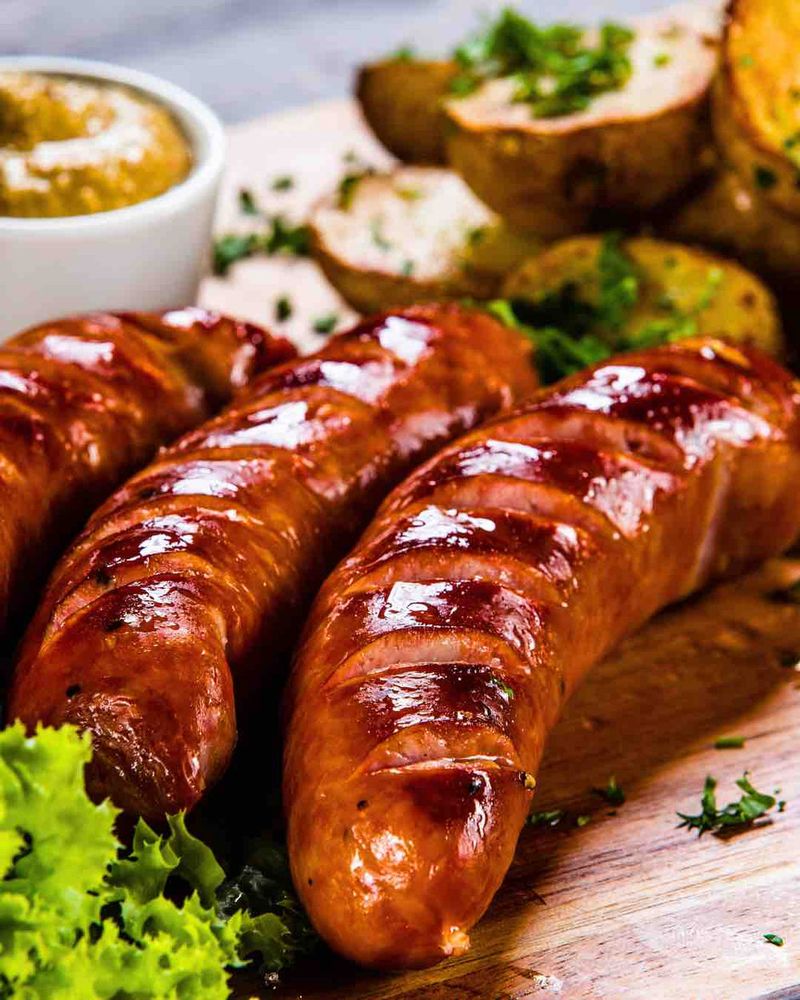
Bratwurst brings a mellow, buttery flavor, with hints of nutmeg, marjoram, and white pepper sneaking in.
Kielbasa hits bolder and smokier, often with a garlicky punch that hangs around in the best way. Both deliver richness, but kielbasa comes in swinging.
5. How They’re Cooked
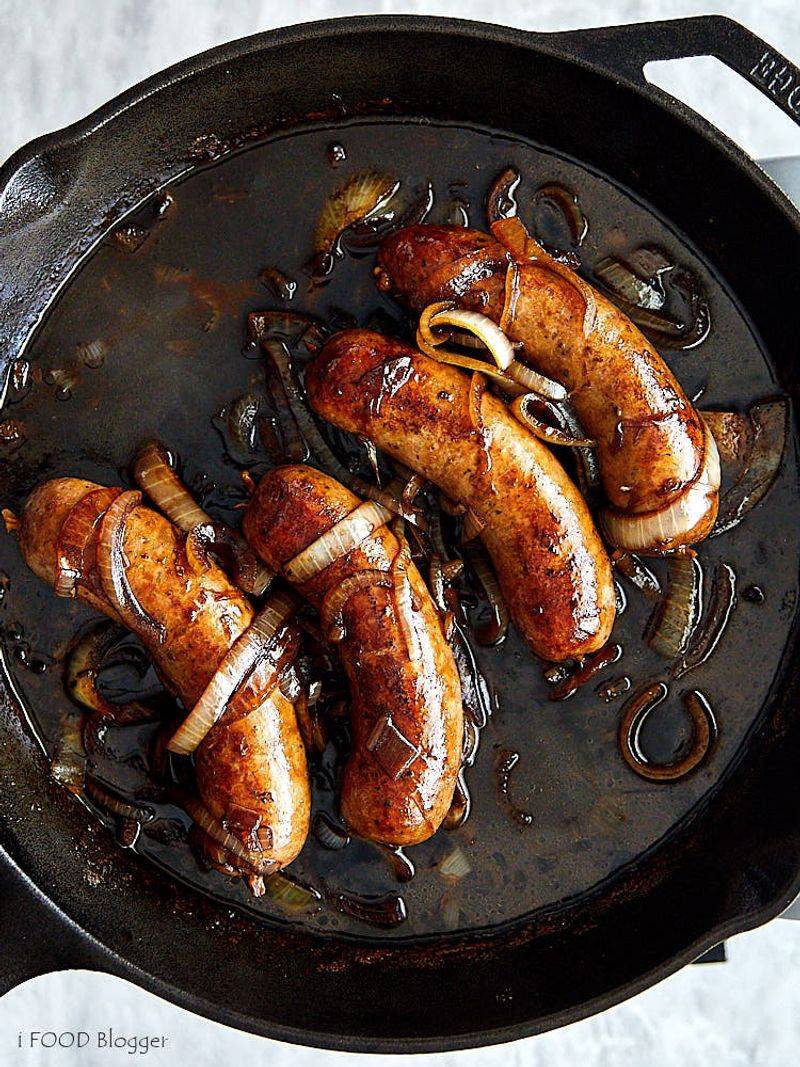
Most bratwurst are sold raw, begging for a gentle simmer in beer or broth before they hit the grill.
Kielbasa arrives pre-cooked or smoked, making it ideal for slicing and searing quickly. That means brat needs babysitting, but kielbasa shows up ready to party.
6. How They’re Smoked (Or Not)
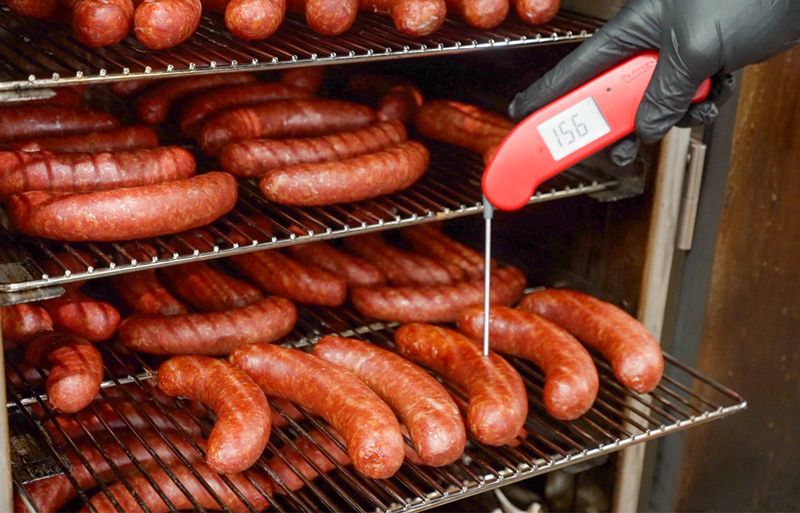
Smoking is where the two go their separate ways—kielbasa is nearly always smoked, giving it that deep flavor and longer shelf life.
Bratwurst usually skips the smoke, keeping its taste fresh and delicate. If you’re craving that campfire aroma, kielbasa takes the crown.
7. Serving Styles And Traditions
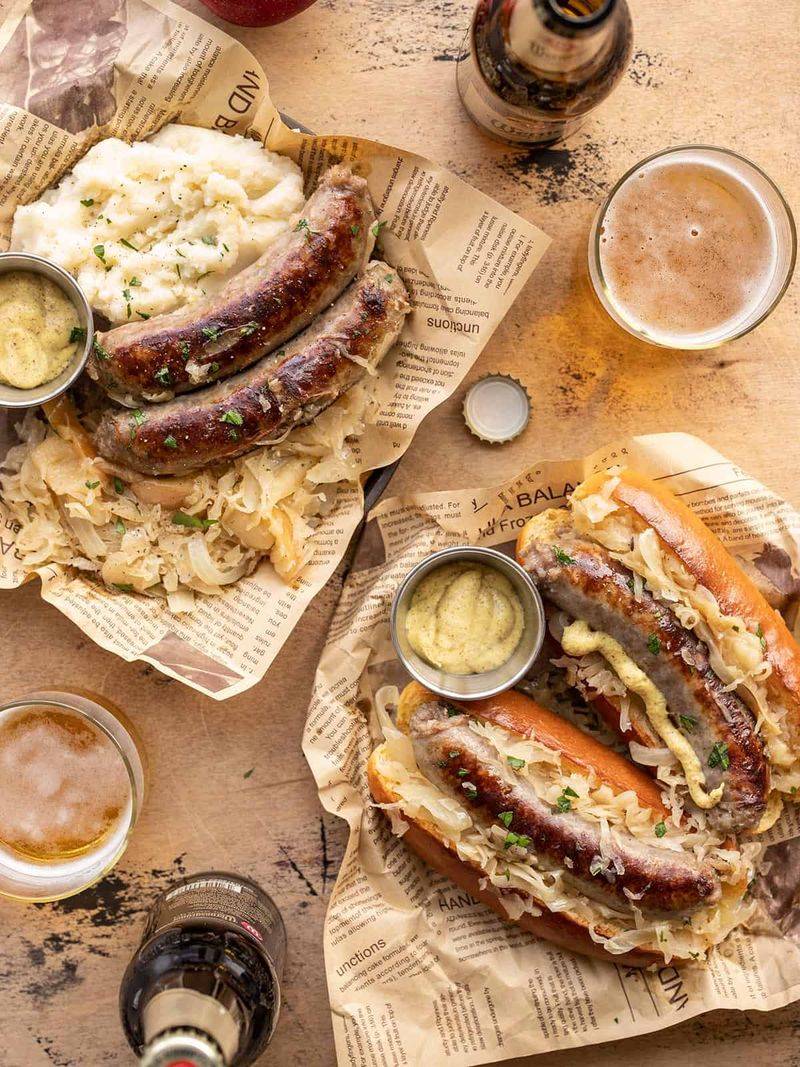
Brats love a soft roll, a stripe of mustard, and maybe a pile of sauerkraut—perfect for backyard grilling.
Kielbasa shows up in stews, on holiday platters, or skewered with cheese at family gatherings. Both have their comfort zones, and both fit in just fine at a football party.
8. Availability And Packaging
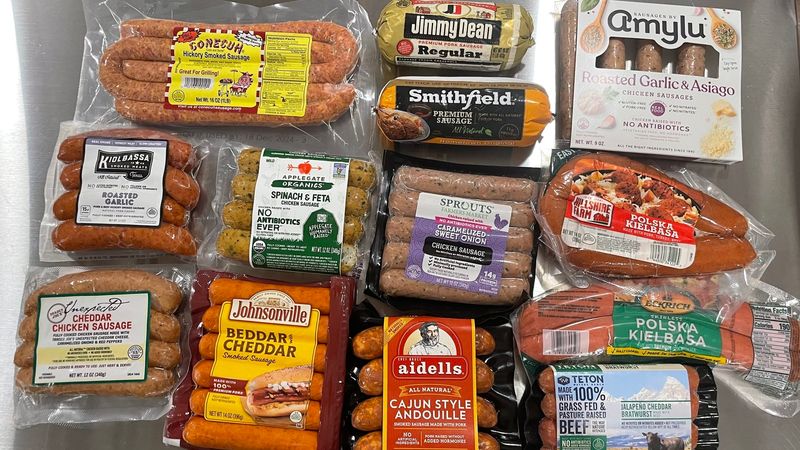
Finding bratwurst raw in the meat section is easy if you live near a German-influenced area, and they usually come linked in soft casings.
Kielbasa shows up smoked, vacuum-packed, and curled into that iconic horseshoe shape. One needs cooking time, the other’s ready when you are.
9. Spice Level And Seasoning
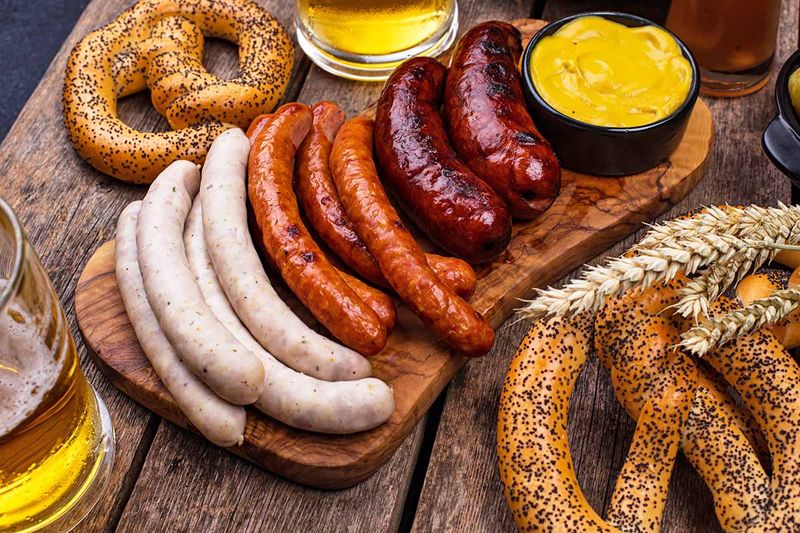
Neither sausage is fiery, but bratwurst stays in the light herb category, with warm, subtle seasoning.
Kielbasa pushes bolder flavors, especially garlic, black pepper, and smoky undertones. If you like big flavor with less fuss, kielbasa might win your plate.
10. Cultural Significance
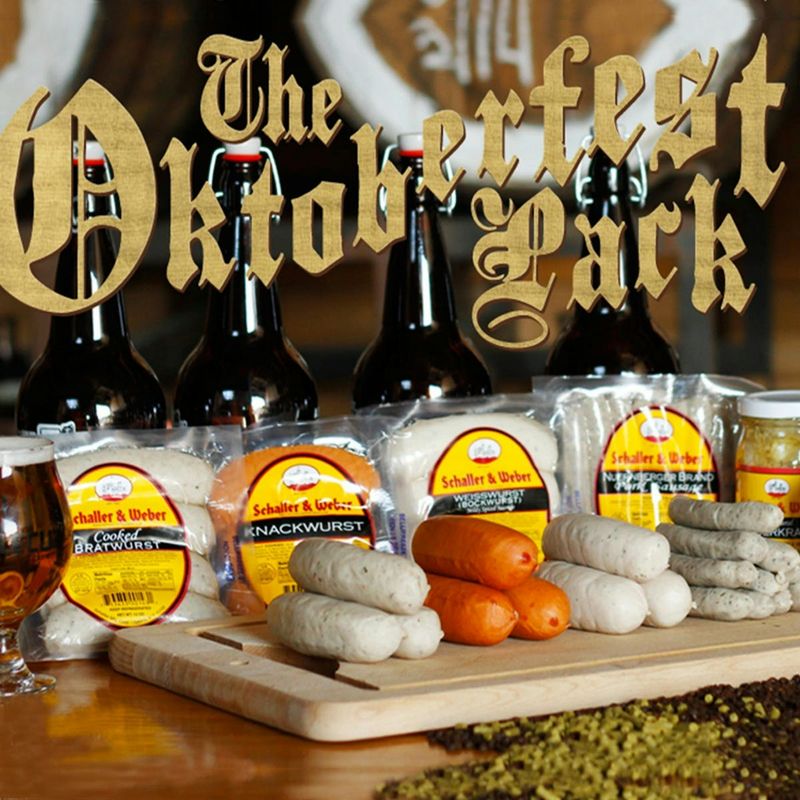
Bratwurst is central to German festivals like Oktoberfest, where it’s grilled by the thousand. Kielbasa plays a starring role in Polish holiday meals, Easter baskets, and Sunday dinners.
Both are more than food—they’re symbols of home, heritage, and gathering together around something delicious.

